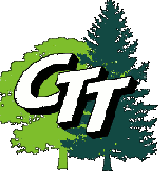Walks & Parks
Lake Te Ko Utu in the centre of Cambridge has 5 different tracks leading down to it from street level. (number 5 on the inset map)
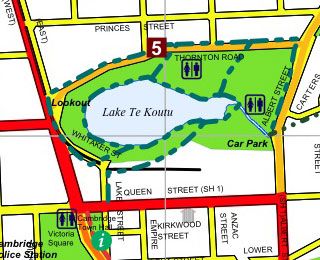
These walks are completely different from those described earlier in our list. Here we're into groomed grass and picnic areas. Parking, a barbeque and toilets are available at its eastern end off Albert St.
This is an 11- minute video showing us clearing growth along the Waikato River bank and planting low-growing grasses to ensure the view of the river is not obscured. We planted a few trees as well. We spent several sessions doing this, and now we await growth of the plants over the next few years. We chose species that will withstand inundation and river currents. The river can rise several metres above the level shown here, through flooding, and the level varies according to the demand of the 7 hydroelectric generators upstream.
The track that goes past our planting is the Settlers Track, which starts here and ends in Lola Silcock Park.
Green Infrastructure
March 28, 2023
Time for Change
Tree Trust applauds the Parliamentary Commissioner for the Environment, Simon Upton, for his recent report on the loss of green space in most of our cities. Struck by the treeless expanse of dark roofs in Hamilton North he worries about how hot and unpleasant these suburbs will become as global warming continues. In Auckland and Hamilton green space has diminished from 70% of urban areas to less than 55%. As planners have tried to rein in urban sprawl, sections have got smaller while at the same time houses have got bigger, and many outdoor areas paved over. On Saturday morning radio, Upton said that in general the more leaves in an area the greater the benefit in terms of pollution reduction, slowing the flow of rainwater, and reducing summer temperature.
He is not against densification but says we must learn to do it smarter. Green space needs to be seen as just as essential as wastewater, drinking water, transport and communication networks. So when land is developed existing trees should be preserved, roads should be reconfigured with one footpath, one cycleway, and one lane for slow traffic with bays for passing and parking, leaving space for shrubs and large trees rather than a grass verge. Yes, it will be costly, but doing nothing will also be costly.
As Waipa District Council considers its 30 year strategic plan (Ahu Ake), Tree Trust will push for recognition of the Commissioner’s suggestion that Green Infrastructure should be given equal weight with other forms of infrastructure in all future planning and development. We encourage others concerned about the future of our town to do the same, while we still have a chance to build a greener, more climate-resilient Cambridge.

August 21, 2021
Old, Gnarly trees
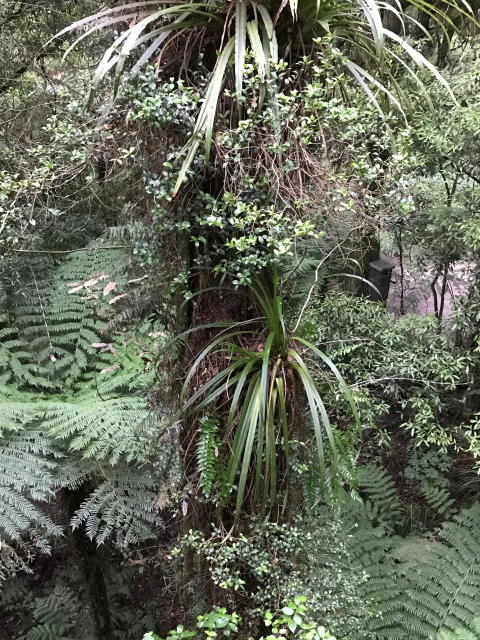
Gnarly, half-rotten, old trees are precious. We need to cherish them,’ writes the philosopher/environmentalist George Monbiot, in a recent ‘Guardian’ article. ‘Big old trees are the keystone structures of forests on which many species depend.’ This brings to mind the wonderful old tawa, rata and rimu to be seen at Maungatautari, and if you walk to the tower in the Southern Enclosure you can get up close and personal with such ecosystems (see picture). You can see the vines, the epiphytes, the mosses, lichens and fungi that flourish on these giant trees. What you don’t often see are the creatures that make their homes there; kaka, morepork, saddlebacks and even tiny rifleman nesting in rotten hollows, bats sheltering in splits in the trunk, lizards lapping at tiny pools of water in branch forks, weta and the many other insects and their larvae that feed on plants and decaying wood, and become in turn food for larger creatures.
All truly healthy ecosystems, seabeds, meandering rivers, forests, depend on ‘old and gnarly places’; in forests, ancient, even rotting, trees that develop over centuries provide the natural architecture for the slow growth of a rich, complex biodiversity. Replacing an old tree with ‘a dozen saplings in plastic rabbit guards is no more meaningful than replacing [a painting by] an old master.’
This got me thinking about what we do in our towns when we talk of the desirability of providing habitat for bats and a diverse range of insects, lizards, and birds. It is not of course a natural forest environment, but to be in any measure successful it surely requires us to pay more attention to the vital importance of retaining wherever possible our big old trees, both native and exotic.

September 2021.
A number of recent newspaper articles set me thinking about the importance of green infrastructure/trees in our urban environment. The first was a report that in Sydney all new stand-alone houses must have space for the planting of a garden tree. This is part of the council’s attempt to combat climate change; the trees would not only help decrease carbon dioxide levels but, by transpiration, would also cool the air in summer, far better than a shade canvas.
The second began with a report about the removal of phoenix palms from Tamihana Avenue in Matamata. The trees were removed at the request of the residents, apparently because the spines on their leaves can cause nasty infections, and the trees attract pigeons. Sadly however, when the residents were surveyed by council concerning replacements, a narrow majority of those who replied did not want any trees. Now there is an outcry from other residents who say they were not even consulted and they do want replacements.
We need to embrace urban trees; like the air we breathe, they are a commons. Yes, they can be inconvenient – they drop leaves and nuts, they sometimes obstruct views. However both for the mitigation of the heating affects of climate change, as well as for their ability to help reduce greenhouse gases and air pollution they are vital in our towns and cities. It is time our own council had a firm policy regarding green infrastructure in towns, both in gardens and streets. Meanwhile, most of us can at least plant a garden tree. The tree shown here in Vogel Street, but, sadly, recently removed, would have made a wonderful, cool place for children to play and parents to relax on a hot summer day.

Cambridge is justifiably proud of being the Town of Trees, and it is an important reason why people want to move here. The benefits of urban trees are not just aesthetic; now known as Green Infrastructure (as opposed to grey infrastructure – roads, buildings, carparks) trees provide ‘services’: environmental (cleaner air , summer cooling, decreased water run-off, biodiversity); economic (energy saving, improved house values); social (encouraging walking, social interaction, human physical and mental well-being). And the greater the total leaf surface area of the tree, the greater its benefits.
But as new developments spring up in all directions, Cambridge is in danger of losing its treed character. People want affordable housing so compact urban design is desirable. But surely there are better ways to achieve this than what we now see unfolding; individual houses crammed so close there is no room for shade trees in gardens; strips between footpath and road too narrow to support a decent-sized tree, while many of those planted in recent years have sulked, been left to grow unsightly or died.
And now Council, to its credit, is set on encouraging commuter walking and cycling, but who will be tempted to walk from their new home through hot streets to work, shop or school and then trudge home again, all hot and sweaty? We need to plan from the outset for adequate space for decent-sized street trees, determine varieties suitable to the situation, plant with care and then maintain them through their early years. We need better design, with narrower streets to slow cars, wider footpaths, separated by wider green strips for decent-sized trees that shade our footpaths and encourage people to use active transport. There is no need for compact housing to be a desert if we plan for decent-sized street trees from the outset.
February 19, 2022.
Are our Protected Trees really protected?
This amazing Black Walnut glorifies the entrance to Lola Silcock Park in Bath Street. It stands on the corner of an empty section in Le Quesnoy Place. It is a Protected Tree, but over the years various people have purchased the property, knowing the status of the tree, and have made application to have it removed. Under the STEM system of classification for Protected Trees it scores 138 points, which signifies that the tree ‘has some outstanding features that contribute to the amenity and /or heritage of the community and make appositive impact on the district.’ (Waipa District Council/Notable Trees). This score is also the trigger point to require notification of removal. Any tree scoring between 110 and 137 points can be removed without notification. The arborist’s assessment states that this ‘tree is in good condition and no threat to human, animal or plant life …. In this tree’s current setting the harm done by it is not a significant factor …. Although if the land were to be built on it would require creative planning and architecture.’
Since law changes were made some years ago concerning urban trees, Auckland City has lost more than 30% of its tree cover. Is this what we want for Cambridge, or indeed for our country, as we begin to endure the effects of climate change? Can we learn to accommodate the natural world of which we are part with more creative solutions, instead of just felling trees when they are inconvenient?
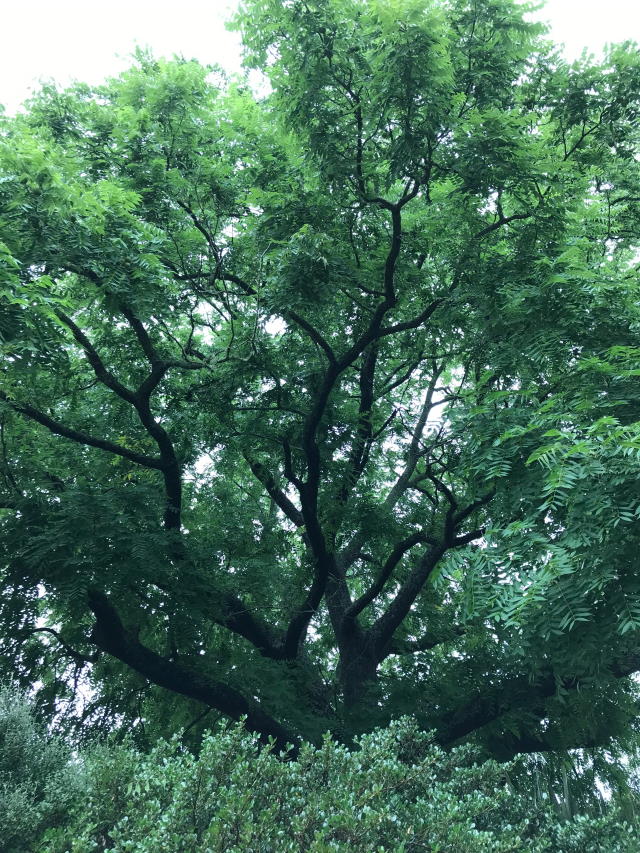
24 April, 2022.
One day it will look like this …
A Listener article (April 9-15 2022) included an article (Over and Out) on the world-wide trend for people departing big cities for smaller towns. Housing costs, Covid-19 and the ability to work from home are part of this trend, but research at Waikato University has detected a further driver. In their “20-minute city” survey they discovered that young and old, single or married with kids, everyone wanted two things above all:
- local shops ( unsurprising)
- access to wilderness, gardens and parks (surprise!)
Project leader Professor Iain White is quoted as saying “We’re hoping the 20-minute city idea will influence decision makers, because we are in danger of losing those green spaces that, actually, people value extremely highly.”
Elsewhere I have come across work, which indicates that green space/parks should be within 300 metres of any home; further away and it will not be used. This too presents a challenge to planners and councils. It is to be hoped that Waipa District Council has got this right in the new developments now springing up around Cambridge. If not it is time for urgent changes to planning rules.
Meanwhile Cambridge Tree Trust has recently planted up a small park near its base on Thornton Road. The trees are only a metre or two high at present, but in time we hope it will be a space where neighbours can wander to admire the trees, enjoy the birds, picnic in the shade, play in the open space, gather fruit.
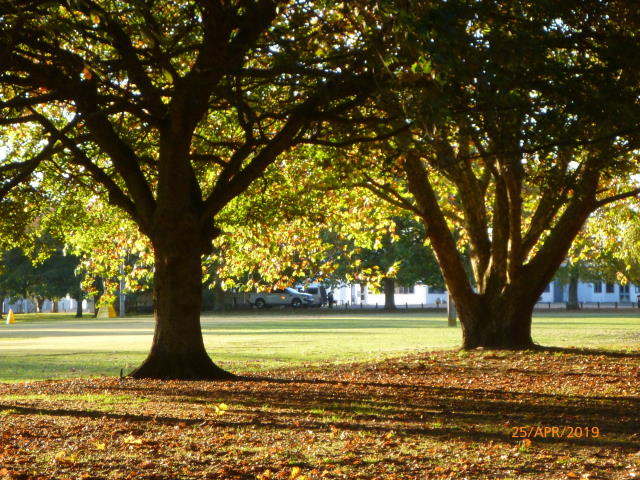
August 31, 2023
Spring and the Earth Spins Faster
While visiting family in Western Australia, I popped down to the local bookshop to see what treasure I could find. And yes! another book by the German forester, Peter Wohlleben, whose earlier book, The Hidden Life of Trees, was a revelation to many. This one, The Secret Network of Nature, is a more general work, which tells how wolves can alter the course of a river, or earthworms control wild boar populations. And yes, it almost always involves trees!
But did you know that trees can even influence the rotation of the earth? Just as a merry-go-round spins faster when the kids riding it draw their legs in close, so every northern hemisphere Autumn when the trees drop their leaves the Earth spins a little faster. We are only talking fractions of a second, but still it is measurable apparently. Most of the land mass of Earth, and therefore most of the trees, lie in the northern hemisphere. When the deciduous trees drop their leaves the weight of this discarded foliage is then about 30 metres closer to the centre of the Earth, speeding the rotation. And in spring the converse occurs: fresh new leaves, plump with water, shift the weight away from the centre and again the planet slows down.
But here’s the weird bit for us in New Zealand. Because most of the southern hemisphere is ocean (no trees), we don’t get to influence this phenomenon. In our Autumn the planet slows down and in our Spring it speeds up. So when Spring is just around the corner get ready for the ride!
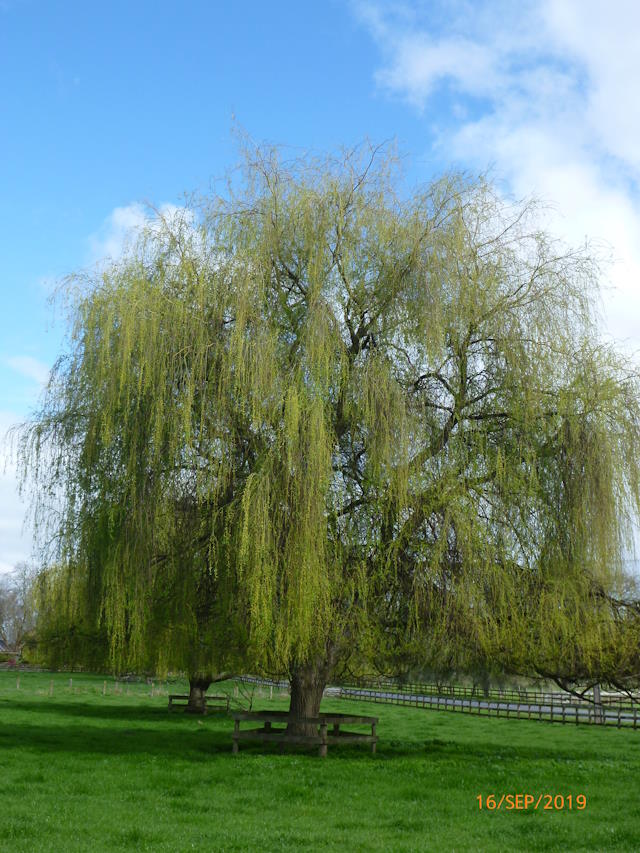
November 23rd 2023
This month I thought it was time to acknowledge and celebrate all the people, mostly unknown, whose foresight has made Cambridge the beautiful Town of Trees that it is today. As the heat of summer approaches, we really appreciate the beauty and coolness of our wonderful trees, such as the handsome oak by St. Andrew's church.
Some of our earliest plantings are the magnificent plane trees in Victoria St., many of which were planted nearly 150 years ago. Similarly, the trees around the square, which include, across the street from the clock tower, the amazing Californian redwood. This is one of the longest-lived of all trees, at well over 2 000 years. To make plantings such as these speaks of our forebears' hope and confidence in their future. It reminds me of the saying: "All is well with the world when old people plant trees, knowing they will never sit in their shade." Despite the problems of the world today, Cambridge Tree Trust shares this belief, and we plant and nurture both native and exotic saplings, some of which we hope will grow to the stature of those we admire today.
We would like to acknowledge all those who have helped in this endeavour in the past with their labour and their donations. We also thank the Waipa District Council for their support, and Mitre 10, who sponsor these monthly articles and support us in other ways as well.
If you want to support the Tree Trust, become a financial member, for even if you are unable to join our work days, your membership will help us. Contact our secretary, at
In the depths of Winter, the deciduous trees of Cambridge offer a special seasonal beauty. From a distance, their bare branches reveal the handsome distinctive forms of the various species, while up close and personal, the beauty of their bark stands out. Here are 4 examples:
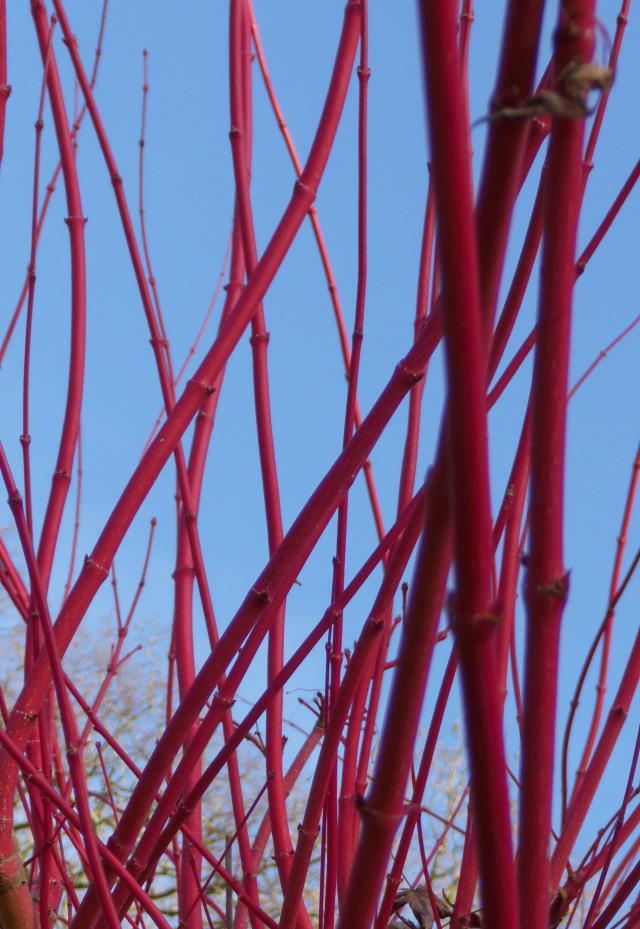
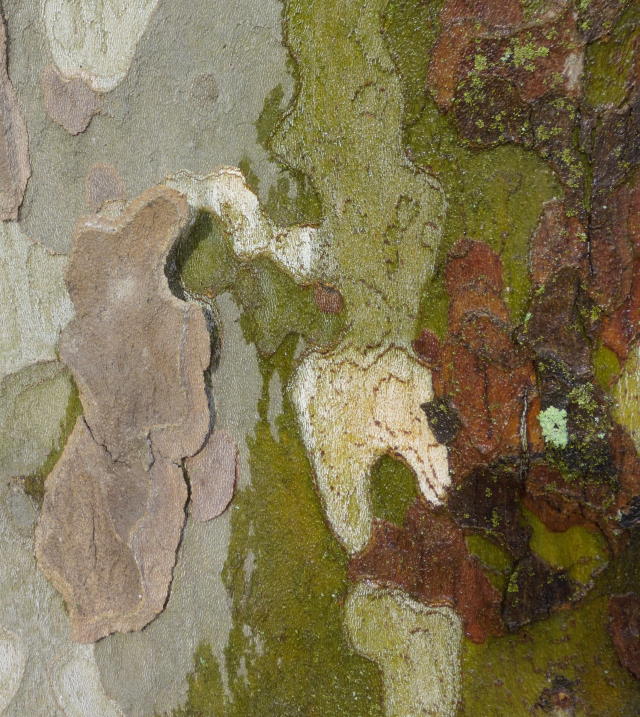
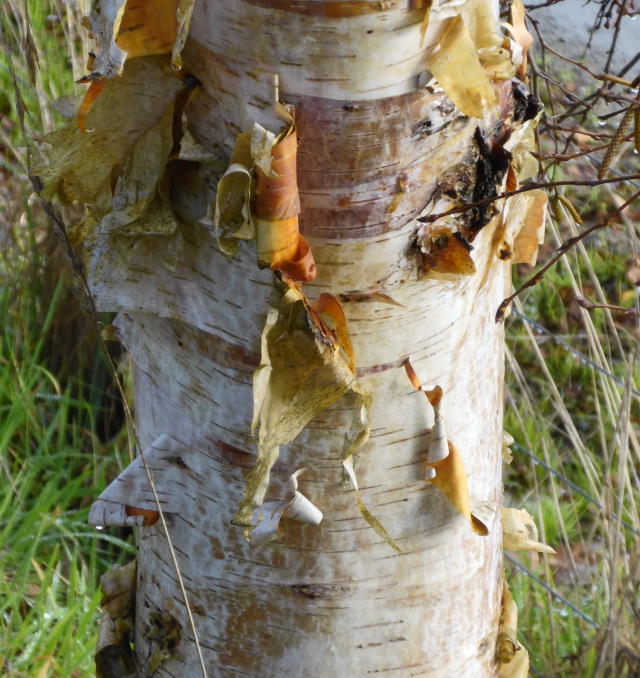
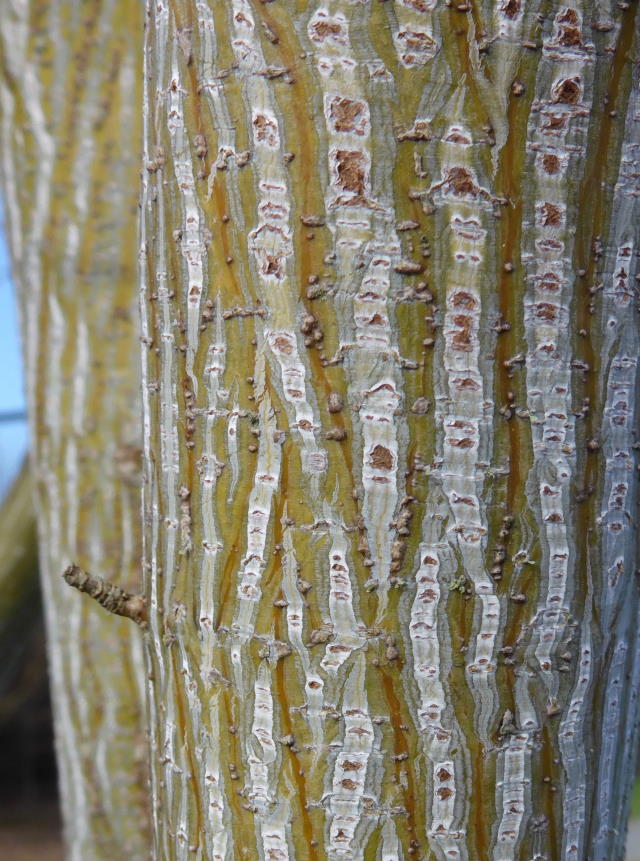
The Velosolutions Pump Track in Cambridge offers a 196m long track and a 222m jump track joined by a bowl in the middle of the two tracks. It is located next door to the public swimming pools and a skateboard park. It's a great place for the entire family to enjoy and play on, and with a footprint of over 2300m2, the track is the largest pump track in Oceania.
The Waipa District Council asked us to plant the area after the tracks had been finished. We were happy to do so. When our planners went there to survey the scene, they met some riders and got into conversation with them. The result was a plan which puts low-growing plants, mainly grasses, in the heart of the tracks so that riders have good visibility and can avoid accidents. Taller plants, largely camelias, have been planted around the outside.
Here are some photos of us at work:










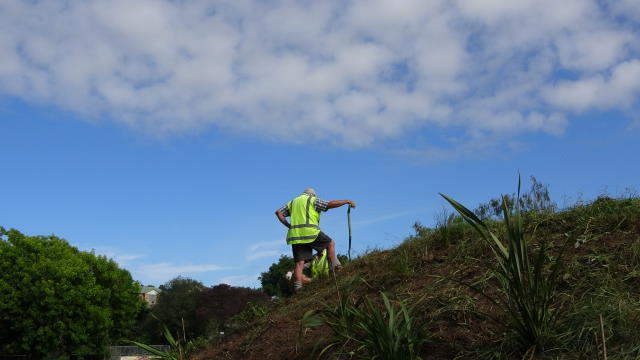
The Cambridge Tree Trust was registered with the Charities Commission as a Charitable Entity under the Charities Act 2005 on 16 August 2007. Registration No: CC10859
